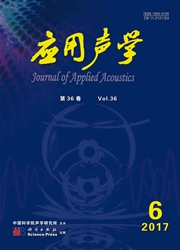

 中文摘要:
中文摘要:
摘要光声成像是21世纪初发展起来的新兴的生物医学成像技术,它同时具备光学成像和声学成像两者的优点,因而备受关注。本文对生物医学光声成像的发展进行了综述。首先,介绍了光声成像的特点以及相对于广泛应用的光学成像技术和声学成像技术的优点;其次,在成像原理上解释了光声成像优点的成因,并介绍了光声断层成像和光声显微镜这两种典型的光声成像技术;再次,详细介绍了多尺度的光声图像分辨率和成像深度,以及多信息维度的光声成像参数;最后,展望了光声成像在生物医学领域的应用潜力并讨论了其局限性。
 英文摘要:
英文摘要:
Photoacoustic imaging (PAl) is a state of the art biomedicine imaging technique in the 21St century. PAI has received many attentions since it combines the advantages of both the ultrasonic and the optical imagings. In this paper, we review the recent progresses of PAl in biomedicine. Firstly, we introduce the characteristics and advantages of PAI comparing to the ultrasonic and optical imaging. Secondly, we explain the reason of its merits and describe two kinds of PAl systems, photoacoustic tomography and photoacoustic microscopy. Thirdly, we review the multi-scale resolution and multi-dimensional information of PAl. Finally, we discuss the limitations of PAl and present an outlook of its potential applications in biomedicine.
 同期刊论文项目
同期刊论文项目
 同项目期刊论文
同项目期刊论文
 Photoacoustic spectrum analysis for microstructure characterization in biological tissue: A feasibil
Photoacoustic spectrum analysis for microstructure characterization in biological tissue: A feasibil Photoacoustic Study on the Co-luminescence Effect of Lanthanide Complexes with Aromatic Acid in Sili
Photoacoustic Study on the Co-luminescence Effect of Lanthanide Complexes with Aromatic Acid in Sili Acoustic band fracture variation of low frequency transmission zone in one-dimensional solid-fluid p
Acoustic band fracture variation of low frequency transmission zone in one-dimensional solid-fluid p Listening to Chemical Materials: Determination of the Photophysical Parameters by Photoacoustic Spec
Listening to Chemical Materials: Determination of the Photophysical Parameters by Photoacoustic Spec Quantitative detection of stochastic microstructure in turbid media by photoacoustic spectral matchi
Quantitative detection of stochastic microstructure in turbid media by photoacoustic spectral matchi 期刊信息
期刊信息
